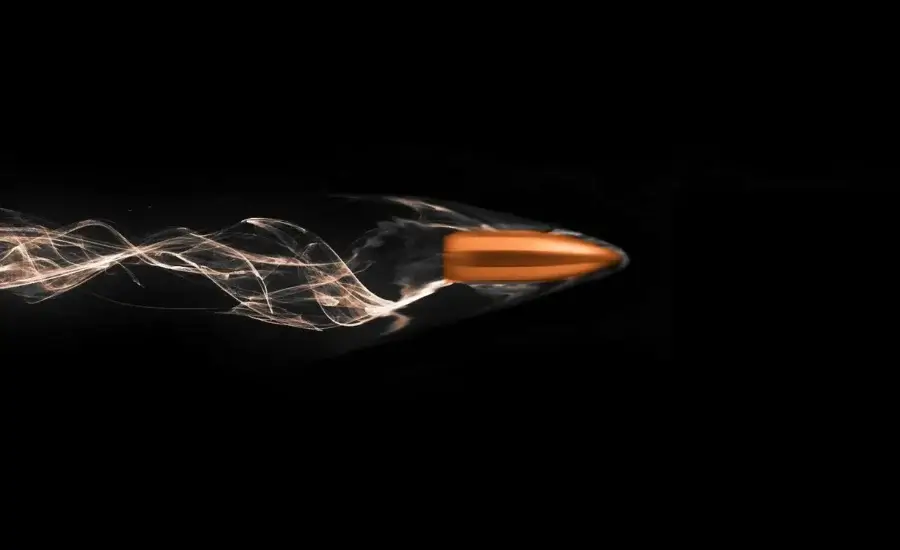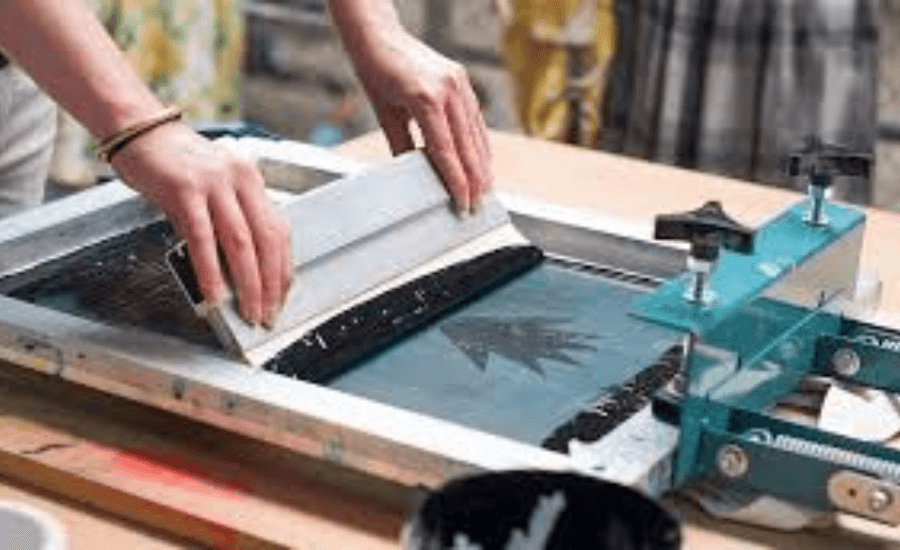When a bullet is fired, it undergoes an intense process of heat and motion. This heat comes from the energy released during firing, friction with the gun barrel, and interaction with air while in flight. But what exactly happens to a bullet’s heat in midair? This topic is important for understanding ballistics, solving forensic cases, and improving weapon design. Despite common myths, bullets don’t become dangerously hot in midair, though the science behind their heat is fascinating.
This article explores how a bullet gains and loses heat, what factors affect its temperature, and how it behaves after being fired. By understanding this, we can debunk myths and learn more about the fascinating physics of ballistics.
The Science Behind Bullet Dynamics
A bullet’s journey begins when the trigger is pulled. Gunpowder ignites in the cartridge, creating high-pressure gases that propel the bullet forward. Inside the barrel, the bullet gains speed and spins due to the rifling grooves. This spinning motion stabilizes the bullet but also creates heat through friction.
Once the bullet exits the barrel, it moves through the air at supersonic speeds. The surrounding air creates drag, which affects both the bullet’s speed and its surface temperature. The heat generated during this process depends on factors like the bullet’s material and speed. Understanding these dynamics is key to studying bullet behavior and performance.
Factors Contributing to Bullet Heat
The temperature of a bullet in flight is influenced by a variety of physical and environmental factors. Each plays a critical role in determining how much heat a bullet generates, retains, and dissipates.
1. Heat from Combustion
The ignition of gunpowder creates intense heat that drives the bullet forward. The combustion process involves temperatures exceeding 1,000°C (1,832°F), resulting from the rapid chemical reaction of the primer and gunpowder.
- How It Transfers Heat: As the gases expand within the cartridge, they push the bullet forward and transfer some of their heat energy to the bullet’s surface. This heat peaks inside the barrel before the bullet exits.
- Significance in Ballistics: This heat is vital for propelling the bullet at supersonic speeds but dissipates quickly once the bullet leaves the confined barrel environment.
2. Barrel Friction
As the bullet travels through the barrel, it experiences significant friction against the rifling grooves that give it a spin for stability.
- Heat Generation: This friction adds substantial heat to the bullet’s surface. Longer barrels or tighter tolerances in the bore create more heat due to prolonged contact.
- Energy Efficiency: While this process generates heat, it also enhances the bullet’s accuracy by stabilizing its trajectory, ensuring optimal flight.
3. Aerodynamic Friction
Once in midair, the bullet encounters air molecules, causing aerodynamic friction.
- Frictional Heating: At supersonic speeds, the bullet compresses the air around it, generating heat. This effect, while present, is less intense than the heat from barrel friction or combustion.
- Variation by Speed: Faster bullets, such as those fired from high-velocity rifles, experience more aerodynamic heating than slower-moving projectiles.
4. Material and Design
The thermal properties and structural design of the bullet significantly influence its ability to retain or dissipate heat.
- Material:
- Lead Bullets: Lead retains heat longer due to its poor thermal conductivity compared to copper.
- Copper-Jacketed Bullets: These dissipate heat faster, reducing surface temperature more efficiently.
- Design: Bullets with streamlined shapes and smaller surface areas minimize friction and aerodynamic heating, optimizing both heat dissipation and flight performance.
5. Environmental Conditions
External factors, such as weather and altitude, play a role in determining how quickly a bullet heats or cools.
- Air Temperature: In hotter climates, bullets may retain more heat, while colder conditions facilitate faster cooling.
- Humidity: Moist air can slightly increase cooling rates due to better thermal conductivity compared to dry air.
- Altitude: At higher altitudes, thinner air reduces aerodynamic friction, which can slightly decrease heat generation.
How Heat Dissipates in Midair
Once the bullet exits the barrel, its temperature begins to drop rapidly as it interacts with cooler air. Two primary mechanisms facilitate this cooling process:
1. Convection
Convection occurs when air molecules come into contact with the hot surface of the bullet, absorbing heat and carrying it away.
- Efficiency: Faster bullets generate more air movement, which enhances the cooling effect.
- Influence of Size: Smaller bullets lose heat faster due to their higher surface-area-to-mass ratio.
2. Radiation
The bullet emits heat as infrared radiation, a process that is slower than convection but still significant over long flights.
- Wavelengths: This heat radiation is mostly in the infrared spectrum, invisible to the human eye but detectable with specialized equipment.
- Impact on Cooling: While slower than convection, radiation becomes more significant as the bullet cools further.
Factors Affecting Cooling Rate
- Speed: Bullets traveling at high speeds experience less cooling time, retaining heat longer.
- Material: Copper-jacketed bullets cool more efficiently due to better heat dissipation properties.
- Flight Time: Over longer distances, bullets have more time to cool before hitting a target.
By the time a bullet reaches its target, it has typically lost most of its heat, rendering it safe from causing burns.
Temperature of Bullets in Various Scenarios
1. In the Barrel
Inside the barrel, the bullet experiences its highest temperature due to:
- Combustion Heat: The ignition of gunpowder creates extreme temperatures.
- Frictional Heating: The rifling grooves generate additional heat through friction.
At this stage, the bullet can reach temperatures close to or exceeding 1,000°C. This is the peak temperature and is sustained only briefly before the bullet exits the barrel.
2. In Midair
When the bullet leaves the barrel, it begins to lose heat quickly as it interacts with the cooler surrounding air.
- Heat Dissipation: Air absorbs the heat through convection and radiation.
- Aerodynamic Friction: While the air heats the bullet slightly, the overall cooling effect dominates.
For most bullets, the surface temperature drops to safe levels within seconds of flight, even at supersonic speeds.
3. Upon Impact
The bullet’s temperature at the point of impact depends on several factors, including its flight time and speed.
- Short-Range Impact: Bullets fired over short distances may still feel warm upon contact.
- Long-Range Impact: Bullets fired over longer distances cool sufficiently to prevent noticeable heat upon impact.
This temperature variance highlights the dynamic nature of heat transfer during a bullet’s journey.
Misconceptions About Bullet Heat
1. “Bullets Become Red-Hot in Midair”
This myth likely originates from exaggerated portrayals in movies and television. In reality, bullets do not reach temperatures high enough to glow visibly during flight.
2. “Heat Alters Trajectory”
Heat has an insignificant impact on a bullet’s trajectory compared to gravity, air resistance, and initial velocity. Factors like spin stability and aerodynamic forces dominate the flight path.
3. “Bullets Cause Burns on Impact”
By the time a bullet reaches its target, it has lost most of its heat to the surrounding air. Even bullets fired at close range are unlikely to cause burns.
Understanding these misconceptions helps demystify the science behind bullet behavior.
Practical Implications of Bullet Heat
1. Forensic Science
- Heat as Evidence: Residual heat on a bullet can help investigators determine how recently a gun was fired.
- Burn Mark Analysis: In rare cases, heat marks on nearby objects can provide clues about firearm discharge.
2. Weapon Design
- Heat-Resistant Materials: Modern bullets use materials like copper jackets to manage heat more effectively.
- Barrel Innovations: Engineers design barrels to minimize overheating during rapid or sustained firing.
3. Safety Improvements
- Cooling Mechanisms: Advances in firearm cooling systems prevent overheating during continuous firing.
- Material Durability: Research into heat-resistant coatings improves firearm longevity and reliability.
Other Factors Influencing Bullet Performance
1. Velocity
- Supersonic bullets generate more heat due to increased aerodynamic friction.
- Subsonic bullets have lower heat generation but may lack the same performance benefits.
2. Environmental Conditions
- Cold weather can enhance cooling, while hot climates may slow heat dissipation.
- High-altitude conditions reduce air density, impacting both friction and cooling.
3. Material and Design
Bullets designed for specific purposes, such as armor-piercing or high-velocity rounds, incorporate materials and shapes that manage heat differently, optimizing performance under various conditions.
Sum Up
When a bullet is fired, it undergoes a rapid heating process fueled by combustion, barrel friction, and aerodynamic drag. Gunpowder ignition generates temperatures exceeding 1,000°C, with friction from the barrel and air adding more heat. Despite myths, bullets do not become red-hot in midair or cause burns upon impact. Their heat dissipates quickly through convection and radiation, particularly over longer distances.
The thermal behavior of a bullet is shaped by its material, speed, and environmental conditions. Copper-jacketed bullets, for instance, release heat more quickly than lead bullets, while bullets traveling at high velocities tend to retain heat longer. These aspects are crucial for studying ballistics, aiding forensic investigations, and advancing firearm design. Breakthroughs in heat-resistant materials and improved barrel technology have enhanced firearm efficiency and safety. Exploring the heat dynamics of bullets reveals intriguing insights into energy transfer and motion, dispelling myths and driving innovations in the firearms industry.
Brain Glower is your doorway to insightful knowledge. Uncover the myths and learn the science behind the heat of bullets in flight.



